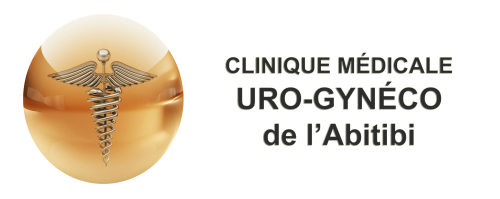Folliculogram (ovarian stimulation for In Vitro Fertilization)

What is it?
Over the past thirty five years, IVF (In Vitro Fertilization) has helped 1000s of couples overcome a wide variety of diagnoses related to infertility helping them becoming proud parents. IVF is the process by which eggs are taken from your ovaries and put together with sperm in a laboratory culture dish. Fertilization takes place “in vitro”, which means “in glass”.
Here’s a simple 6 steps breakdown of how this process. It doesn’t matter if you’re just starting to research IVF or are already planning to begin IVF, knowing more about the treatment can reduce your anxiety and make your journey feel more comfortable.
How is the exam performed?
#1: Initial IVF consultation and getting ready to stimulate your ovaries.
In preparation for an In Vitro Fertilization cycle, you will first do what we call a “practice run” for the embryo transfer and allows the physician to adapt the procedure to your particular anatomy before the actual intervention. In a few words, an ultra-thin catheter is inserted into the uterus guided using a sonogram. Many patients compare the ‘test run’ to a pap test, it is painless and is very short in duration.
When done with the pre-cycle testing, you will review the results with the physician and plan the protocol for treatment. The protocol is like a map that you and your medical team will use. The plan provides tentative dates; frequently, treatment timelines that will need to be adjusted based on your response to the treatment; you will need to anticipate changes and remain flexible with your work and travel schedules throughout the duration of the treatment.
Often, the In Vitro Fertilization cycle starts with birth control pills to help:
- Reduce the chances of creating cysts that could interfere with the start of the cycle.
- Synchronize the egg follicles so it all starts at the same time, as determined by you and your physician.
- Allow you and your medical team to control the timing of the cycle.
#2: Ovarian stimulation & monitoring
In a normal ovulation cycle, one egg usually matures per month. During IVF, the objective is to have multiple mature eggs, as this will increase your chances of success. In the stimulation phase which lasts 8 to 14 days, injectable medications are to stimulate the ovaries and produce eggs.
These medications are derivatives of the natural hormones involved in the natural ovulation process. (FSH and LH). Some protocols use only one of them but many use a combination.
During this important phase, you will need to visit the office ~ 7-8 times. These monitoring appointments consist of:
- Transvaginal Ultrasound which measures the growth of the egg follicles and the thickness of the uterine lining, both of them should increase during that phase.
- Bloodwork measuring the estrogen level. It is just another indicator of the growth and maturation of the eggs – rising as the follicles grow.
After each appointment, you will receive a call from your nurse, usually a few hours later. It is important to be available to talk to the nurse when she calls to make sure you receive the important. She will inform you of the progress of your cycle, medication modifications, if necessary, and when you should return for the next monitoring appointment. This is also an opportunity for you to ask any questions you may have.
#3: The trigger shot and retrieval of the egg
The trigger shot ends the stimulation phase. The trigger shot provides final maturation to the developing follicles and triggers ovulation. Timing is crucial in this phase because the egg retrieval must be performed before the expected time of ovulation.
The physician decides when you are ready to trigger based on the 2 factors that have been monitored during the stimulation phase:
- Size of the Follicles – The goal is to have as many follicles as possible and they need to be 18mm+ since these are more likely to contain mature eggs.
- Level of Estrogen (Estradiol) – While there is no exact number the physicians are looking for; the level directly correlates with the number of follicles in the ovaries. The cells inside each follicle produce estrogen so a patient with 7 follicles will generally have a lower blood estrogen level than a patient with 15 follicles.
Approximately 36 hours after the shot the egg retrieval occurs. Your partner’s sperm is either collected the day of the retrieval or if he is unavailable, a sample previously frozen will be thawed and used. The egg retrieval itself takes only about 20-30 minutes. During the procedure, an ultrasound is used to guide a needle into each ovary and remove the follicular fluid and egg.
#4: Embryo development
- Conventional Fertilization: Frequently used in cases such as blocked fallopian tubes or unexplained infertility. The embryologist isolates the healthy sperm, which is then exposed to each egg inside the embryology laboratory where fertilization happens spontaneously.
- Intracytoplasmic Sperm Injection (ICSI): Used in cases when the sperm is unable to effectively penetrate the egg on its own. The embryologist selects a single healthy sperm and injects it directly into the center of each egg.
The decision is based on the quality of the sperm. If the quality of the sperm does not meet the parameters required for conventional fertilization, the embryologist will make the decision to switch to ICSI. Your medical team will let you know if an unplanned ICSI procedure is recommended.
Once fertilization occurs, the embryos begin to develop. Every morning for the next five to six days, an embryologist examines the developing embryos and adds notes in your record regarding each individual embryo. Your nurse will follow up daily with your fertilization report updating you on the status of each growing embryo. Exciting times indeed!
#5: Embryo transfer
The embryo transfer is a simple procedure is very quick (about 5 minutes). There’s no anesthesia or recovery time needed. This experience will be similar to the test run performed prior to starting the cycle.
The morning of the transfer, the embryologist will recommend the number of embryos to be transferred. These recommendations are based on overall embryo quality and the age of the embryo, which will ideally be at day five or six.
Prior to the start of the embryo transfer, the patient reviews her cycle with the physician and the final decision regarding the appropriate number of embryos to transfer is made, along with what to do the remaining embryos., if any.
Once the number of embryos to transfer is determined, the transfer catheter is loaded with the appropriate number of embryos. You will be able to watch the process on a monitor in the exam room and see the embryos as they are selected.
During the transfer, the doctor will insert the catheter and push the embryo into the uterus. You will then be asked to lie quietly for a few. Then, you’ll be given instructions for the following couple of weeks until the pregnancy test.
#6: The pregnancy test
The pregnancy test occurs around 18 days after the egg retrieval. Unlike a home pregnancy test, blood is drawn and the hCG level is measured. An hCG level over 100 is considered to be positive even if many pregnancies start with a beta hCG level below 100. You’ll be asked to repeat the test in 2 to 3 days.
The goal is to have the level of hCG roughly double every couple of days. If it does, another beta may be ordered. If all three betas indicate a healthy pregnancy, then a vaginal ultrasound will be scheduled between the 6th and 8tht week. At that time, your doctor will be looking for a heartbeat and a gestational sac to confirm the pregnancy.
If the cycle results in a negative pregnancy test, it’s important to remember that you have a treatment plan with options for trying again. Your medical team will start by instructing you to stop your medications and offer you to schedule a consultation with your doctor. At that time, you’ll discuss what happened during the cycle, any changes you might make to your protocol of In Vitro Fertilization, and ultimately how you want to proceed.

Contact-us
Phone
Address
1660, 3E AV, VAL-D’OR, Québec J9P 1W1
